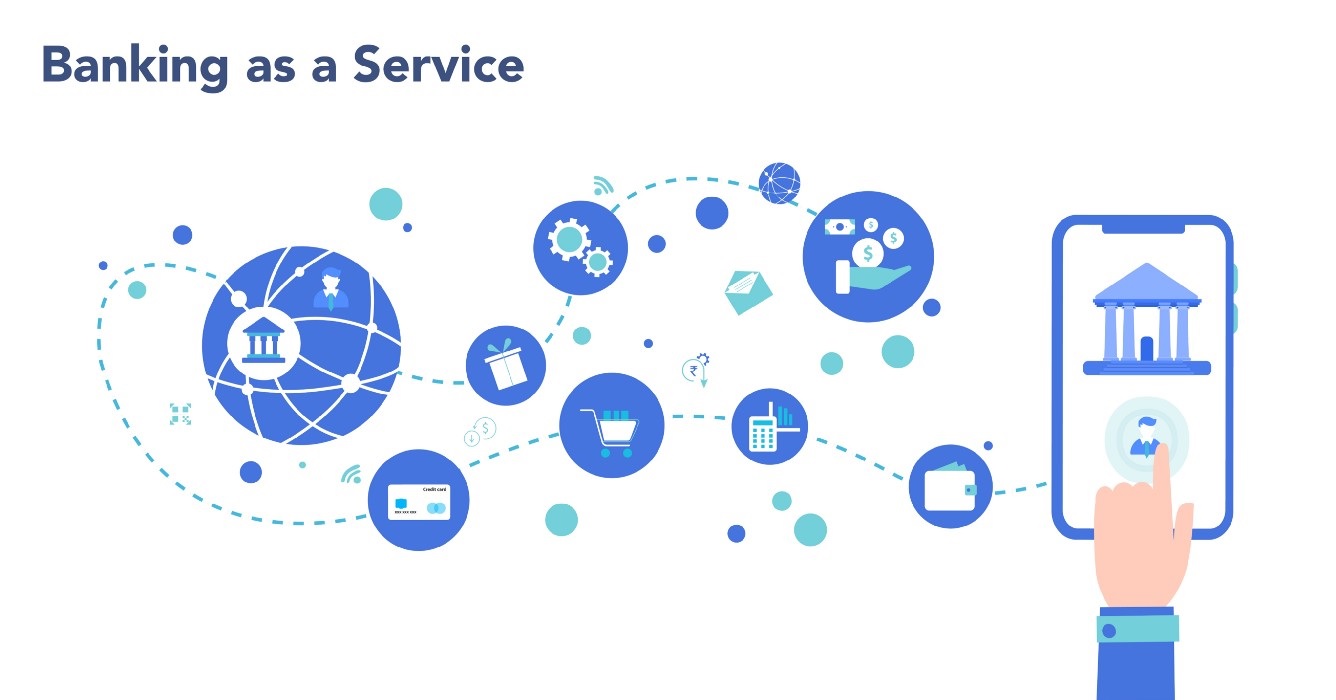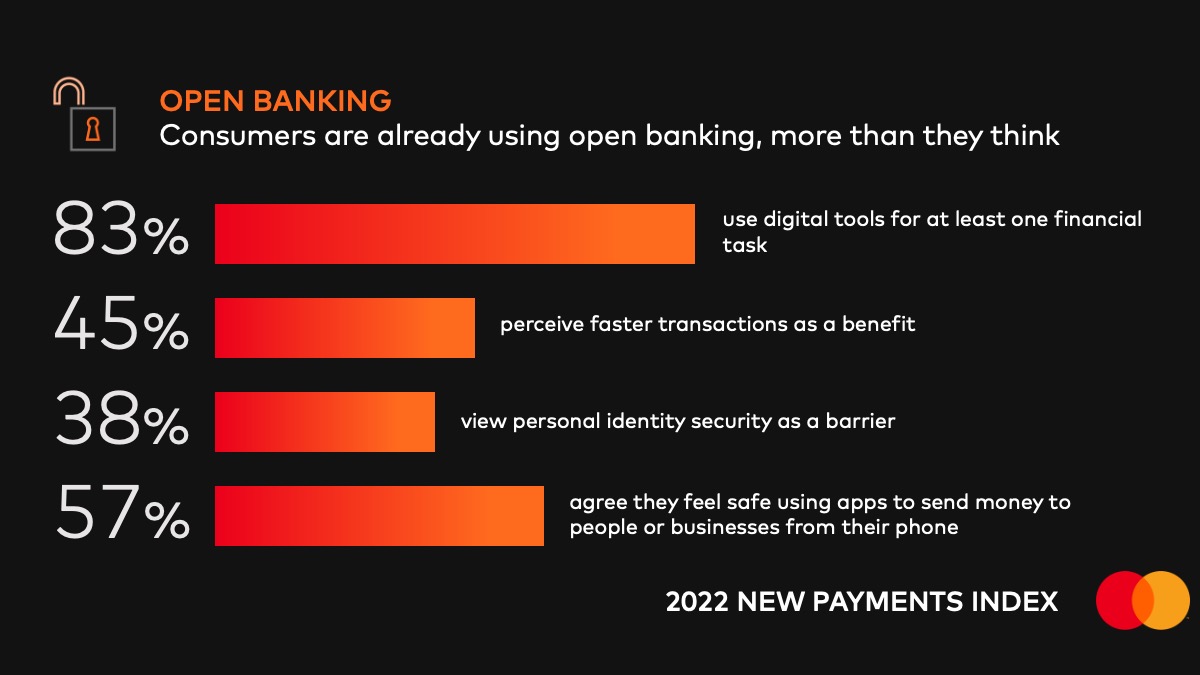Introduction
Welcome to the digital age of banking, where open banking has emerged as a game-changer for financial institutions worldwide. Open banking refers to the practice of sharing customer data and providing access to third-party providers through application programming interfaces (APIs).
While it may sound intimidating, open banking is actually a transformative development that brings numerous benefits to traditional banks. By embracing this new paradigm, banks can unlock innovative opportunities, strengthen customer relationships, and thrive in an increasingly competitive landscape.
As technology continues to reshape the financial industry, banks must adapt to meet the evolving needs and expectations of their customers. Open banking serves as a catalyst for this transformation, enabling banks to leverage the power of data, collaboration, and innovation.
In this article, we will explore how open banking benefits banks, paving the way for a more dynamic and customer-centric banking ecosystem. From increased competition to improved data analysis, let’s delve into the advantages that open banking brings to the table.
Increased Competition
One of the primary advantages of open banking for banks is the injection of increased competition into the industry. With open banking, banks are no longer limited to providing all their services and products in-house. Instead, they can collaborate with third-party providers to offer a wider range of innovative solutions to their customers.
This shift towards collaboration creates a more competitive environment, as banks strive to differentiate themselves by offering unique and tailored products and services. By embracing open banking, banks can tap into the expertise and capabilities of fintech companies, giving them access to cutting-edge technologies and solutions.
For example, a traditional bank could partner with a fintech startup that specializes in providing personalized financial planning tools. This allows the bank to offer its customers a sophisticated financial planning platform, enhancing the overall customer experience. In turn, this promotes healthy competition among banks, as they continually strive to enhance their offerings and attract more customers.
Moreover, open banking fosters innovation by encouraging banks to develop and launch new products and services to stay ahead of the competition. Through open APIs, banks can easily integrate external services into their own platforms, providing customers with a seamless and comprehensive banking experience.
With increased competition, customers are the ultimate winners. They have access to a wider range of financial products and services, all tailored to their specific needs and preferences. Banks must continuously evolve and innovate to meet these rising customer expectations, ultimately driving industry-wide improvements and advancements.
Enhanced Customer Experience
Open banking has revolutionized the customer experience in the banking industry. By sharing customer data with authorized third-party providers, banks can offer personalized and tailored services that cater to the unique needs of each individual customer.
With open banking, customers have the freedom to grant access to their financial information to trusted third-party providers, such as budgeting apps or investment platforms. This allows these providers to analyze the customer’s financial data and provide personalized recommendations and insights. For example, customers can receive real-time spending alerts, personalized budgeting tips, or investment suggestions based on their financial profile.
Banks can also leverage open banking to create a more streamlined and convenient experience for their customers. Through APIs, they can integrate their own banking services with external platforms, such as e-commerce sites or travel booking platforms, simplifying and enhancing the overall customer experience.
Furthermore, open banking promotes greater transparency and control for customers. They can easily view and manage their financial information from various accounts and institutions in a centralized platform, providing a holistic view of their financial health. This transparency breeds trust and empowers customers to make informed financial decisions.
Another aspect of enhanced customer experience is the ability to access banking services anytime, anywhere. With open banking, customers have the flexibility to choose the digital channels and fintech apps that best suit their preferences and lifestyle. They are no longer confined to the services offered by a single bank, but can access a wide range of banking options through a unified platform.
Overall, open banking enables banks to provide a more personalized, convenient, and transparent experience for their customers. By embracing this approach, banks can forge deeper and more meaningful relationships with their customers, fostering loyalty and satisfaction.
Access to New Revenue Streams
Open banking not only benefits banks by enhancing the customer experience but also opens up new revenue streams that were previously untapped. By partnering with third-party providers and leveraging APIs, banks can diversify their product offerings and generate additional income.
One of the ways banks can access new revenue streams is through revenue-sharing arrangements with fintech companies. Banks can provide access to their customer base, while fintech firms offer innovative products and services that complement the bank’s offerings. This collaborative approach allows banks to earn a share of the revenue generated by these third-party services.
For instance, a bank could partner with a peer-to-peer lending platform and offer their customers the opportunity to invest in peer-to-peer loans. The bank acts as a facilitator and earns a commission based on the volume of loans originated through their platform.
Furthermore, open banking enables banks to monetize customer data through data analytics and insights. By aggregating and analyzing customer information, banks can identify trends, customer preferences, and behaviors that can be used to develop targeted marketing campaigns and product offerings.
Through data-driven insights, banks can offer personalized financial products, such as customized investment portfolios or personalized loan options, which appeal to the unique needs and goals of individual customers. These tailored offerings not only enhance the customer experience but also create new revenue opportunities for banks.
In addition, open banking allows banks to explore partnerships with non-traditional players, such as retailers or insurance companies, to create innovative bundled products or loyalty programs. For example, a bank could collaborate with a popular e-commerce platform to offer exclusive discounts or rewards to their mutual customers, generating revenue through increased customer engagement and transactions.
By embracing open banking and leveraging these new revenue streams, banks can diversify their income sources, reduce reliance on traditional banking services, and tap into the growing opportunities presented by the digital economy.
Improved Data Analysis and Risk Assessment
Open banking provides banks with a wealth of customer data that can be harnessed to improve data analysis capabilities and enhance risk assessment processes. By leveraging this data, banks can gain valuable insights into customer behavior, financial patterns, and creditworthiness.
With open banking, banks can access and analyze a wider range of financial data from multiple sources. This includes transaction history, income and spending patterns, credit scores, and even data from external accounts held by the customer. This comprehensive view of customer information allows banks to better understand their customers’ financial health and make more informed lending decisions.
By analyzing customer data, banks can develop more accurate risk assessment models, leading to more effective credit underwriting and risk management practices. This helps banks identify and manage potential risks, such as credit defaults or fraud, more efficiently and effectively.
Furthermore, open banking facilitates the integration of external data sources, such as market data or economic indicators, with customer data. This holistic approach enables banks to gain deeper insights into the overall market trends and economic conditions, allowing for more robust risk assessment and proactive decision-making.
Real-time access to customer data through open banking also enables banks to identify and respond quickly to changes in customers’ financial circumstances. For example, if a customer’s income decreases or their spending patterns indicate financial distress, banks can proactively reach out to offer tailored financial solutions or assistance, mitigating the risk of non-performing loans.
Additionally, the availability of comprehensive data through open banking enables banks to develop and offer innovative financial products and services. By understanding customer preferences and behaviors, banks can create personalized offerings that meet specific customer needs while managing risk effectively.
Overall, the improved data analysis and risk assessment capabilities enabled by open banking drive more informed decision-making, improve risk management practices, and allow banks to offer tailor-made financial solutions to their customers.
Cost Savings and Operational Efficiencies
Open banking presents banks with opportunities to achieve significant cost savings and operational efficiencies. By streamlining processes, eliminating unnecessary intermediaries, and embracing automation, banks can optimize their operations and reduce costs.
One of the key ways open banking contributes to cost savings is through the automation of manual processes. With the integration of APIs, banks can automate tasks such as data retrieval, customer authentication, and payment processing. This reduces the need for manual intervention and frees up resources, allowing employees to focus on more value-added activities.
Furthermore, open banking allows banks to consolidate their systems and platforms, leading to more efficient operations. By integrating multiple services and systems into a unified platform, banks can improve data sharing, eliminate duplication, and streamline internal workflows. This consolidation not only saves costs but also enhances data accuracy and reduces operational risks.
Open banking also eliminates the need for costly and time-consuming data entry and reconciliation. With secure and seamless data sharing between banks and third-party providers, the chances of errors and discrepancies are greatly reduced. This ensures more accurate and efficient processes, leading to cost savings in error correction and manual reconciliation efforts.
Moreover, through partnerships with third-party providers, banks can leverage their expertise and infrastructure, avoiding the need to invest in costly technology development or maintenance. For example, banks can collaborate with fintech companies that specialize in fraud detection or cybersecurity, benefiting from their advanced tools and systems without the need for significant upfront investments.
Additionally, open banking promotes greater competition among banking service providers, driving down costs for banks and their customers. With increased transparency and access to a wider range of financial products and services, banks are compelled to offer competitive pricing and better value propositions to attract and retain customers.
Overall, the cost savings and operational efficiencies derived from open banking allow banks to allocate resources more strategically and focus on delivering value to their customers. By eliminating legacy inefficiencies and embracing modern technologies and partnerships, banks can streamline their operations, improve profitability, and remain competitive in the fast-evolving financial landscape.
Collaborative Partnerships and Innovation
Open banking fosters a culture of collaboration and innovation within the banking industry. By embracing partnerships with fintech companies, technology firms, and other third-party providers, banks can leverage their expertise and capabilities to drive innovation and offer new and improved services to their customers.
Collaborative partnerships enable banks to tap into the agility and innovation that fintech startups bring to the table. These partnerships offer access to cutting-edge technologies, such as artificial intelligence, machine learning, and blockchain, which can revolutionize traditional banking processes and customer experiences.
For instance, a bank may partner with a fintech company specializing in digital payments to offer a seamless and secure mobile payment solution to its customers. By combining the bank’s established customer base and regulatory compliance with the fintech’s technological know-how, both parties benefit from the collaboration and deliver value-added services to customers.
Collaboration also extends beyond fintech firms to include other industries, such as retail, healthcare, and transportation. By integrating banking services with these industries, banks can offer innovative bundled products, loyalty rewards, or personalized financial solutions that cater to customers’ specific needs and lifestyles.
Open banking facilitates the exchange of data and services through secure APIs, enabling seamless integration and collaboration between banks and external partners. This exchange of information and resources encourages creativity and innovation, as banks continuously seek new ways to enhance their offerings and cater to evolving customer expectations.
Furthermore, collaborative partnerships allow banks to explore new markets and customer segments that were previously untapped. By collaborating with local or regional players, banks can extend their reach and offer tailored services that cater to the specific needs and preferences of these markets.
Open banking also encourages banks to cultivate a culture of experimentation and continuous improvement. By embracing agile methodologies and fostering an environment that encourages creativity and risk-taking, banks can rapidly innovate and bring new products and services to market.
Moreover, open banking encourages innovation through the open exchange of ideas within the industry. Banks can participate in hackathons, industry conferences, and collaborative forums, sharing insights and best practices with other players in the ecosystem.
In summary, collaborative partnerships and innovation are key drivers of open banking. By embracing collaboration with fintech firms and other industries, banks can leverage expertise, harness cutting-edge technologies, and explore new markets, ultimately driving innovation and delivering enhanced value to their customers.
Regulatory Compliance
Regulatory compliance is a critical aspect of the banking industry, ensuring the integrity and stability of the financial system. Open banking plays a pivotal role in meeting and even exceeding regulatory requirements in today’s evolving regulatory landscape.
Open banking frameworks, such as the Revised Payment Services Directive (PSD2) in Europe, provide clear guidelines and standards that banks must follow to ensure the secure and controlled sharing of customer data. These regulations aim to protect customer privacy, enhance data security, and promote fair competition in the industry.
By adopting open banking practices, banks are better equipped to comply with these regulatory requirements. The use of APIs and secure data sharing protocols ensures that customer data is protected and accessed only by authorized parties, reducing the risk of data breaches and unauthorized access.
Open banking also enhances transparency as customers have greater control and visibility over the data being shared with third-party providers. They can choose to grant or revoke consent at any time, giving them more power over their personal information.
Furthermore, open banking promotes competition by enabling authorized third-party providers to access customer data and offer innovative financial services. This fosters a more dynamic and customer-centric banking ecosystem, aligning with regulatory objectives to promote fair competition and consumer choice.
With open banking, banks can also leverage enhanced data analytics capabilities to meet regulatory reporting requirements more effectively. By aggregating and analyzing customer data from various sources, banks can generate comprehensive reports and assess compliance with regulatory guidelines more efficiently.
Moreover, open banking enables banks to stay agile in the face of changing regulations. As regulatory requirements evolve, banks can quickly adapt their systems and processes to remain compliant. The flexibility provided by open banking allows banks to implement and integrate regulatory changes more seamlessly while minimizing operational disruption.
Collaborative partnerships facilitated by open banking also contribute to regulatory compliance. Banks can collaborate with external partners and share resources to ensure compliance with specific regulatory requirements, such as anti-money laundering (AML) and know-your-customer (KYC) regulations.
In summary, open banking not only aligns with regulatory compliance requirements but also enhances transparency, security, and customer control over their own data. By adopting open banking practices, banks are better positioned to navigate the complex regulatory landscape and meet evolving regulatory requirements effectively.
Conclusion
Open banking presents a multitude of benefits for banks in an increasingly digital and customer-centric era. By embracing this transformative approach, banks can unlock new opportunities, enhance customer experiences, and stay competitive in a rapidly evolving industry. Through increased competition, banks are pushed to differentiate themselves by offering innovative products and services through collaborative partnerships with fintech companies. This not only benefits customers with a wider range of options but also creates new revenue streams for banks through revenue-sharing arrangements and data-driven insights.
Open banking also drives operational efficiencies and cost savings through the automation of manual processes, streamlining workflows, and eliminating intermediaries. The improved data analysis and risk assessment capabilities enabled by open banking empower banks to make more informed decisions, manage risks more effectively, and develop personalized financial solutions for customers.
Moreover, open banking fosters a culture of collaboration and innovation within the banking industry. Through partnerships with fintech firms and other industries, banks can harness cutting-edge technologies, explore new markets, and drive continuous improvements in their offerings. In addition, open banking ensures regulatory compliance by adhering to the strict guidelines in terms of data sharing, privacy protection, and customer consent.
In conclusion, open banking is a transformative shift that offers a multitude of benefits for banks, customers, and the financial industry as a whole. By embracing open banking, banks can leverage technology, collaboration, and data-driven insights to enhance customer experiences, drive innovation, and stay competitive in an ever-changing landscape. It is essential for banks to recognize the immense value of open banking and adapt their strategies to harness its full potential.

























